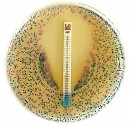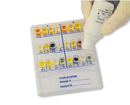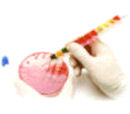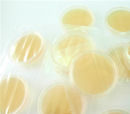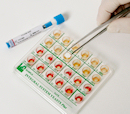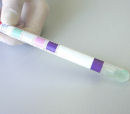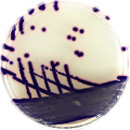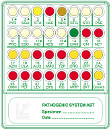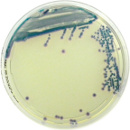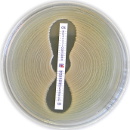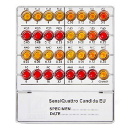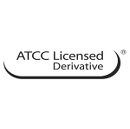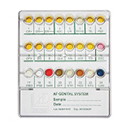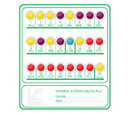MAIA Pesticide MultiTest
Colorimetric system for the detection of organophosphate,
organochloride and carbamate pesticides residues
in soil, water, food and drink
The method of Acetylcholinesterase – Microplate Acetylcholinesterase Inhibition Assay (MAIA, ref. 79700) – for the detection of organophosphate, organochloride and carbamate pesticides residues in hydro-acetonitrilic extracts of solid/liquid food matrices is based on testing in microtitre plates of Acetylcholinesterase (AChE) activity inhibition by pesticide molecules, that belong to 3 important families.
MAIA is a rapid semiquantitative analytic screening method.
The AChE is preincubated with the desiccated extract to accentuate the pesticide's inhibition effect on AChE, if present in the food matrix in examination. Afterwards, the enzyme-extract system is integrated with an appropriate reaction substratum (acetylthiocholine) and with a chromogenic detector for thiocoline that has developed.
The reaction is stopped by a denaturant of the enzymatic protein. Proceed to absorbance measures through microplate reader, or through Direct visual evaluation by comparing the colour in Sample wells with those in Control wells: the yellow colour intensity is inversely proportional to the pesticide quantity. The method preforms a biological test in which the analyte pesticide is selectively intercepted bacause of its specific "noxious" action on a critical physiological event of the animal organism, the AChE activity in nervous and neuromuscular junctions. The control columns contain:
|
|
Wells A1-B1-A3-B3: desiccated biological milk.
STARTER is not added to these wells. Their absorbance value is representative of milk matrix. |
Wells C1-D1-C3-D3: desiccated biological milk. In these wells the reaction is complete: maximum colour development. |
Wells E1-F1: desiccated milk at 10 µg/kg Paraoxon concentration. Wells E3-F3: desiccated milk at 100 µg/kg Carbaryl concentration. In these wells the reaction is partially inhibited |
Wells G1-H1: desiccated milk at 50 µg/kg Paraoxon concentration.
Wells G3-H3: desiccated milk at 500 µg/kg Carbaryl concentration. In these wells the reaction is almost totally inhibited. |
The columns 7-12 are reserved to samples.
MAIA® Pesticide MultiTest permits 48 tests.
Direct visual evaluation of pesticide titers in the Sample Extracts:
Compare the color in Sample wells with those in Control wells: a pesticide concentration estimate in the extract is obtained by the yellow color intensity developed in the sample well, compared to the color in control wells. The yellow color intensity is inversely proportional to the pesticide quantity.
|
|
In the photo: Control columns containing Paraoxon
MAIA® Pesticide MultiTest also permits quantitative determination of pesticide titers through absorbance values by microplate reader.
Brevetto italiano N. 0001332238. European patent pending, request no. 03425778.2 |
|
Copyright © 2025 Liofilchem® srl - All Rights Reserved








